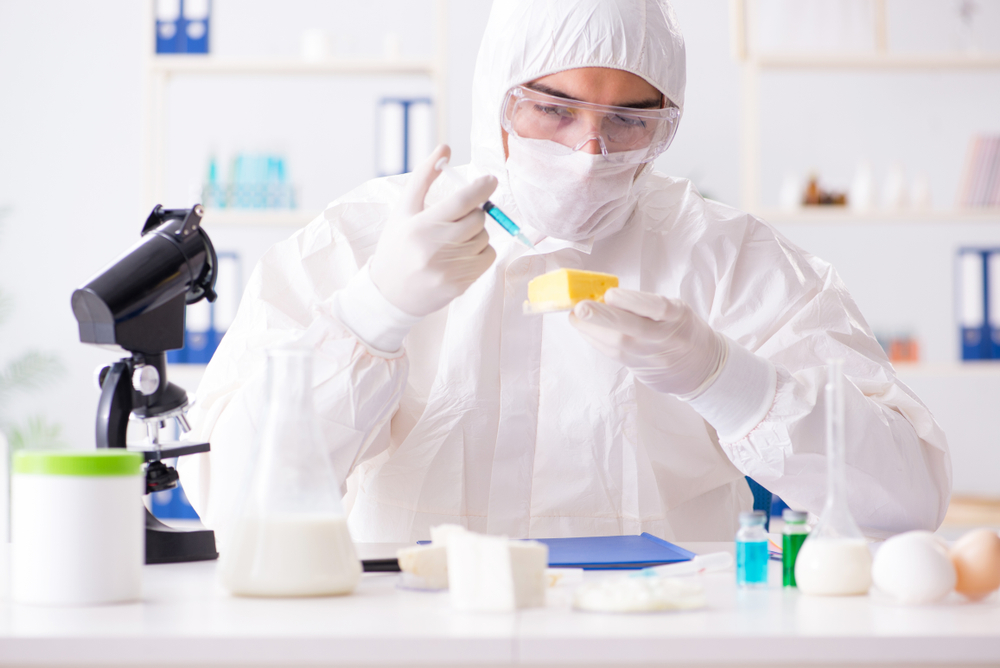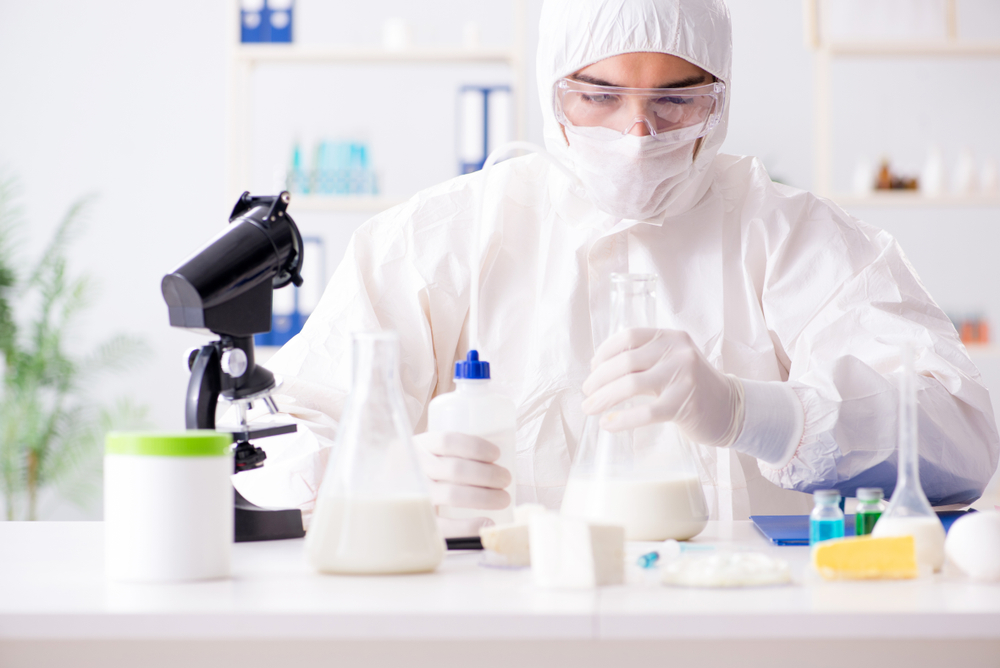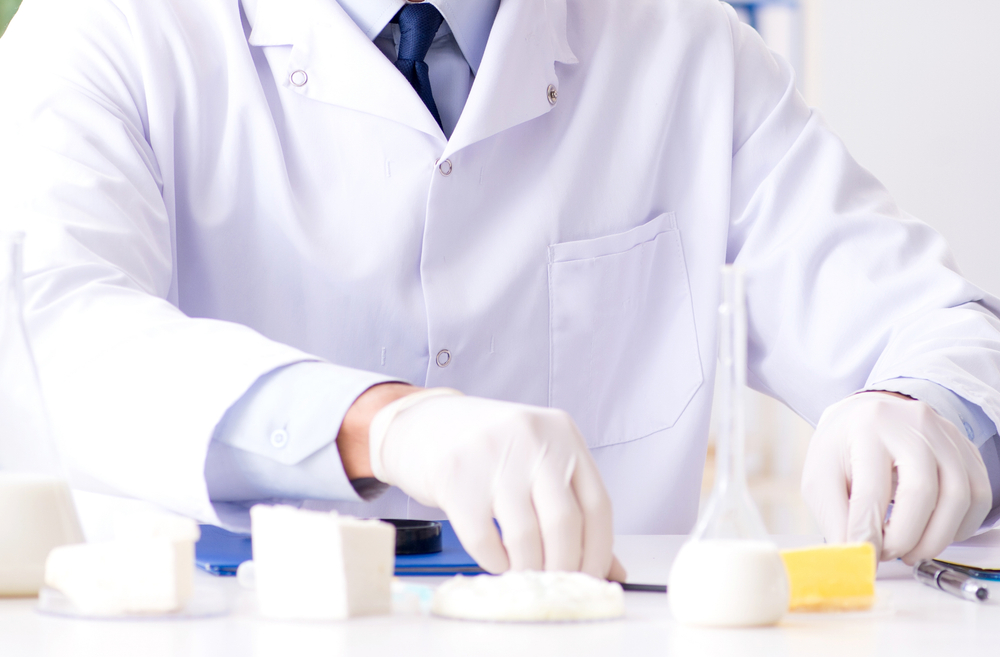Your cart is currently empty!
Lab-Made Butter Created From CO2 Tastes Like The Real Thing, Says Bill Gates

What if the butter melting on your morning toast didn’t come from a cow at all, but from carbon dioxide captured out of thin air? That question no longer belongs to science fiction. A California-based startup named Savor, backed by Bill Gates, has unveiled a process that transforms CO2, hydrogen, and oxygen into butter that tastes and behaves like the real thing. Early tasters say it’s indistinguishable, and Gates himself insists the product doesn’t just mimic dairy—it is dairy, only without the environmental cost of livestock farming.
The development arrives at a moment when the food system is under increasing scrutiny for its impact on the planet. Livestock production contributes nearly 15 percent of global greenhouse gas emissions, and butter, often celebrated for its richness in cooking and baking, happens to be one of the highest-impact dairy products. Savor’s innovation offers a radical proposition: enjoy the same flavor and function while cutting the carbon footprint by two-thirds. If it succeeds, it could reshape not only how we think about butter but also how we think about food itself.

The Science Behind Air-Made Butter
Savor, a California-based startup supported by Bill Gates, is working on a process that quite literally makes butter out of thin air. The company has developed a thermochemical method that converts carbon dioxide, combined with hydrogen and oxygen, into fat molecules that are structurally identical to those found in dairy products. This isn’t just another plant-based alternative relying on oils or emulsifiers to approximate dairy’s texture. Instead, what Savor is creating is something that behaves like butter on a molecular level, which means its flavor, consistency, and performance in cooking or baking could be indistinguishable from the real thing. By building the product out of the same basic chemical building blocks, the company is attempting to close the gap between imitation and authenticity in food science.
The implications for the environment are considerable. Traditional dairy production is one of the most resource-intensive and polluting sectors of agriculture. According to the United Nations Food and Agriculture Organization, livestock farming, which includes both dairy and meat, accounts for about 14.5 percent of all global greenhouse gas emissions. Butter, in particular, carries a significant climate burden, with a footprint of approximately 2.4 grams of CO2 equivalent per calorie for unsalted butter with 80 percent fat content. Savor’s lab-made alternative, by contrast, could reduce that number to less than 0.8 grams per calorie. That represents a nearly threefold decrease in emissions, alongside additional savings in land and water use. The process releases no greenhouse gases directly, requires no farmland, and uses less than a thousandth of the water consumed in conventional agriculture. For a world facing accelerating climate challenges, innovations like this point to how food technology can play a role in reshaping global sustainability.
Bill Gates has underscored these benefits in his own advocacy for the project. In an online post, he acknowledged that the very idea of eating fats created in a lab might strike people as unusual or even unappetizing at first glance. But, he argued, the potential for this technology to cut emissions and preserve natural resources is immense. By shifting to lab-made fats, society could drastically reduce its reliance on environmentally damaging livestock systems without sacrificing the tastes and textures that make foods like butter so appealing. Gates also emphasized a critical factor that could determine the technology’s success: taste. Because the butter is chemically identical to the traditional version, he says it doesn’t just come close to the real thing—it is the real thing, only made without the cow.

The Environmental Case for Lab-Made Dairy
Livestock agriculture is among the most resource-intensive industries on the planet, responsible not only for significant greenhouse gas emissions but also for enormous land and water consumption. Dairy alone requires vast tracts of pasture, feed crops, and infrastructure, and the methane released from cows is a potent contributor to global warming. When considered in terms of efficiency, the current system seems outdated—millions of acres dedicated to feeding animals that are ultimately used to produce milk, butter, and cheese. This resource-heavy model places a burden on ecosystems, from deforestation to water scarcity, and its contribution to climate instability is undeniable. That’s where technologies like Savor’s step in: by directly engineering fats without involving animals or fields of feed, the environmental trade-offs can be sharply reduced.
The potential reduction in carbon footprint is particularly striking. Real butter averages about 2.4 grams of carbon dioxide equivalent per calorie, and that figure represents just one product in a vast dairy supply chain. By comparison, Savor’s lab-made butter could come in under 0.8 grams per calorie, a number that may seem small on paper but becomes profound when multiplied across millions of households. Replacing just a fraction of conventional butter production with such alternatives could lead to measurable declines in agricultural emissions, especially when paired with broader reductions in meat and dairy consumption. The prospect of scaling this kind of technology offers an attractive vision of sustainability: a way to decouple human diets from the most damaging aspects of industrial farming without requiring a complete upheaval of culinary culture.
Equally important is the reduction in resource demand beyond emissions. The process developed by Savor does not require farmland, grazing animals, or water-intensive crops like alfalfa and corn silage. Instead, it builds its fats using abundant elements already present in the air and the atmosphere, meaning it bypasses the entire cycle of planting, harvesting, and animal feeding. Gates noted that the water requirement is less than a thousandth of traditional agriculture, which makes the innovation especially relevant for regions already experiencing water stress. In an era of climate-driven droughts, shrinking aquifers, and competing demands on fresh water, the appeal of a fat product that bypasses these bottlenecks is undeniable.
At a broader scale, technologies like this one raise questions about how societies can balance tradition and necessity. The environmental benefits are evident, but they also highlight an uncomfortable truth: the way food has been produced for centuries may no longer be viable in a climate-conscious world. Savor’s butter, though small in scope now, symbolizes the shift from legacy systems toward scientific solutions designed to address global crises. Whether embraced widely or not, it demonstrates that the conversation about sustainable diets is moving far beyond tofu and soy milk into a new era of molecular-level re-engineering.

The Challenge of Consumer Acceptance
Even if lab-made butter proves to be chemically identical and environmentally superior, consumer acceptance will determine its future. Food is not only about function or nutrition but also deeply tied to culture, identity, and comfort. For many people, dairy products like butter are synonymous with home cooking, baking traditions, and sensory experiences passed down for generations. Convincing buyers to replace something as iconic as butter with a laboratory-created equivalent may prove more challenging than the science itself. This is a hurdle that other alternative proteins and dairy substitutes have also faced, often struggling to win over consumers who perceive them as less tasty or overly processed.
Savor is already preparing to test its product in more structured ways. While the company has conducted informal taste panels with small groups, a more formal round of consumer testing is planned as part of its path to commercialization. The company claims that the flavor and texture are essentially indistinguishable from conventional butter, but widespread consumer trials will be the true test. Taste, after all, is subjective, and while a chemical match might satisfy scientists, convincing a baker or a home cook requires emotional resonance as much as molecular accuracy. If people feel the product is “close but not quite right,” adoption may be slow, even if the environmental argument is strong.
There is also the psychological barrier of food made in a lab. While plant-based meats and dairy alternatives have become increasingly popular, many consumers remain skeptical of highly engineered or “synthetic” foods. The narrative of eating fats built from carbon dioxide can be unsettling at first encounter, especially in cultures where naturalness is valued. This is not unlike the initial skepticism faced by plant-based meat brands such as Beyond Meat and Impossible Foods, which overcame hesitancy by positioning themselves as environmentally responsible while still offering the indulgence of meat. Lab-made butter will need its own narrative, one that blends sustainability with the reassurance that it is not an artificial compromise but an authentic match to traditional butter.
Ultimately, the battle for consumer hearts will not just be about taste but also about trust. Regulatory approval processes, transparent ingredient lists, and effective communication about safety will all shape whether the public is willing to embrace this product. Savor’s CEO Kathleen Alexander has acknowledged that the company remains in a pre-commercial stage, expecting no sales until at least 2025, giving them time to refine not only their science but also their story. The next two years will be as much about cultural persuasion as they are about technological validation.

The Role of Innovation and Investment
The emergence of lab-made butter is not happening in isolation. It is part of a much larger wave of innovation in food technology, spurred by both environmental concerns and shifts in consumer demand. Over the past decade, companies have been racing to produce viable alternatives to meat, dairy, and seafood, ranging from plant-based proteins to lab-cultured meat grown from animal cells. Each of these projects represents an attempt to reimagine the foundations of food production, with the ultimate goal of creating systems that can feed billions without exhausting the planet’s resources. Savor’s approach stands out because it bypasses plants and animals altogether, building fats directly from the air.
Bill Gates’s involvement underscores the importance of investment in scaling such ventures. His support has historically lent credibility and momentum to sustainability projects, as seen with his backing of alternative protein companies and renewable energy technologies. For startups like Savor, this kind of endorsement not only provides financial backing but also attracts media attention and sparks broader conversations about the role of technology in solving climate challenges. It signals that influential figures see promise in these radical approaches, and that alone can help overcome early skepticism.
The regulatory landscape will play a critical role in determining how quickly products like Savor’s butter reach markets. Food safety agencies must assess whether these new fats meet standards for human consumption, a process that is often lengthy but crucial for public confidence. Navigating approvals while simultaneously preparing to scale production requires significant resources, highlighting why outside investment is so critical. Without it, many promising technologies struggle to move from the laboratory to the grocery aisle. The next phase for Savor is not just scientific but logistical: scaling up production, ensuring consistency, and positioning the product to compete with traditional dairy on both price and accessibility.
This moment also reflects a shift in how societies think about food. Where once innovation in food science focused on convenience—think of processed snacks or frozen meals—today’s wave is increasingly tied to sustainability. Lab-made butter is not just a novel product but a statement about the future of agriculture and climate adaptation. It invites consumers and investors alike to consider food not only as a source of pleasure and nutrition but also as a lever for systemic change. That broader framing may be as essential to its success as the taste on the tongue.
Cultural Shifts in Eating Habits
The question of whether people will adopt lab-made butter is ultimately part of a bigger story: how diets evolve in response to both necessity and innovation. Across history, major shifts in food culture have often followed technological change. Pasteurization of milk, industrial bread production, and the rise of frozen foods were all initially met with resistance, yet eventually became staples of modern life. Lab-made butter could be seen as the next step in that trajectory, a response to the pressures of climate change rather than the pursuit of convenience alone.
Public acceptance of plant-based alternatives provides useful context. A decade ago, plant-based meats and dairy substitutes were niche products with limited appeal, often criticized for blandness or unfamiliar textures. Today, they line supermarket shelves worldwide, and while not everyone has embraced them, their presence has normalized the idea of alternatives to traditional animal products. Lab-made butter may follow a similar path: unfamiliar at first, gradually more accepted as its benefits become clearer and its taste proves reliable. Over time, what seems experimental today could become a staple in kitchens tomorrow.
Generational attitudes may also shape adoption. Younger consumers tend to be more open to sustainable and experimental foods, driven by awareness of climate change and concern for animal welfare. For them, choosing lab-made butter could be an extension of values they already practice, much like choosing oat milk over cow’s milk or supporting brands with strong environmental commitments. Older generations may be more resistant, tied to culinary traditions and wary of foods perceived as artificial. This generational divide suggests that widespread adoption may not happen overnight but could accelerate as cultural priorities shift.
There is also the influence of chefs, food influencers, and the hospitality industry. When prominent voices in food culture embrace new products, they often help normalize them for the broader public. If lab-made butter finds its way into restaurants, bakeries, and high-profile food experiments, it may become easier for consumers to imagine it in their own kitchens. In this sense, acceptance may not hinge solely on marketing campaigns but also on the endorsement of cultural tastemakers who show what is possible when science and tradition meet.
A Call to Rethink What We Eat
The arrival of butter made from air is more than a quirky headline—it is a glimpse into the future of food. As the world grapples with the escalating impacts of climate change, the way we eat cannot remain untouched. Livestock farming, long considered a given in human diets, is being challenged not only by environmental necessity but also by scientific possibility. Savor’s lab-made butter offers a tangible example of how radical innovation can preserve beloved foods while reducing their environmental toll. The challenge ahead lies in overcoming skepticism and ensuring that sustainability does not come at the cost of culinary joy.
If consumers can embrace lab-made fats as not merely substitutes but as legitimate, climate-friendly counterparts to traditional dairy, the shift could mark a turning point in the global food system. Small changes in everyday items like butter may not seem revolutionary, but multiplied across societies, they represent powerful levers for change. Choosing products that align with sustainability goals becomes a way for individuals to participate in global climate action, not through sacrifice, but through adaptation.
At its core, this is not a story about butter alone but about the human capacity to innovate when faced with existential challenges. Food has always been central to survival, culture, and identity. Reimagining how it is made does not diminish those traditions—it ensures they can endure in a world that demands balance between human appetites and planetary limits. The question is not whether people will one day eat lab-made butter, but how quickly societies can adapt to the reality that what we eat is as much about the future of the planet as it is about pleasure at the table.
